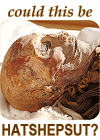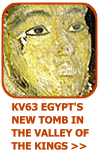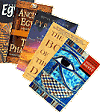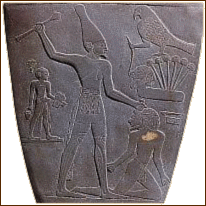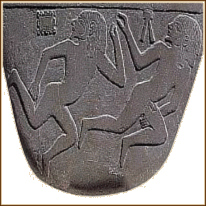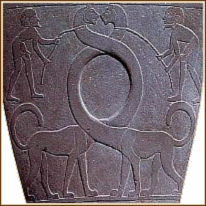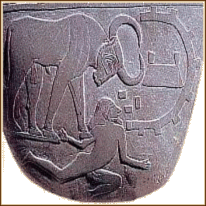|
|
|||||||||||||||||||||
|
|
The physical representation of pharaoh 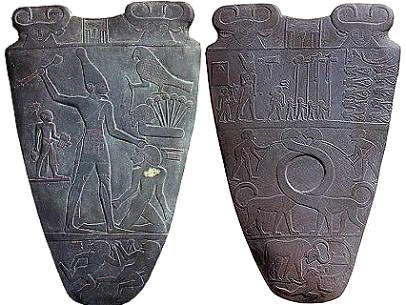 The Narmer Palette also set the artistic canon of representation, depicting the pharaoh as all-powerful, warrior like, smiting his enemies and always shown larger than any other character, emphasising his godly status. The Narmer Palette also set the artistic canon of representation, depicting the pharaoh as all-powerful, warrior like, smiting his enemies and always shown larger than any other character, emphasising his godly status.
The human form when represented, took on a peculiar style. The head was seen in profile along with arms and legs, which would often show the person with two left feet or right hands. The torso would be drawn in a frontal view, the hips three-quarters turned and the eye enlarged. This artistic canon remained a constant for some 1600 years and changed only once throughout Ancient Egypt’s history, during the reign of Akhenaten in the 18th Dynasty. The reverse side of the Narmer Palette (left) shows a finely carved and highly detailed raised relief of a king, undoubtedly Narmer, ready to strike down a foe whom he grabs by the hair. This pose would become typical in Ancient Egyptian art. He wears a short skirt, an animal's tail and the white crown. The front of the palette (right) shows Narmer wearing the red crown inspecting a heap of beheaded corpses. He holds a mace in his left hand and a flail in his right. The central scene shows two men tying together the long necks of two strange animals, possibly representing the unification of Upper and Lower Egypt. Details from the palette
|
||||||||||||||||||||

|
|||||||||||||||||||||
|
|||||||||||||||||||||



